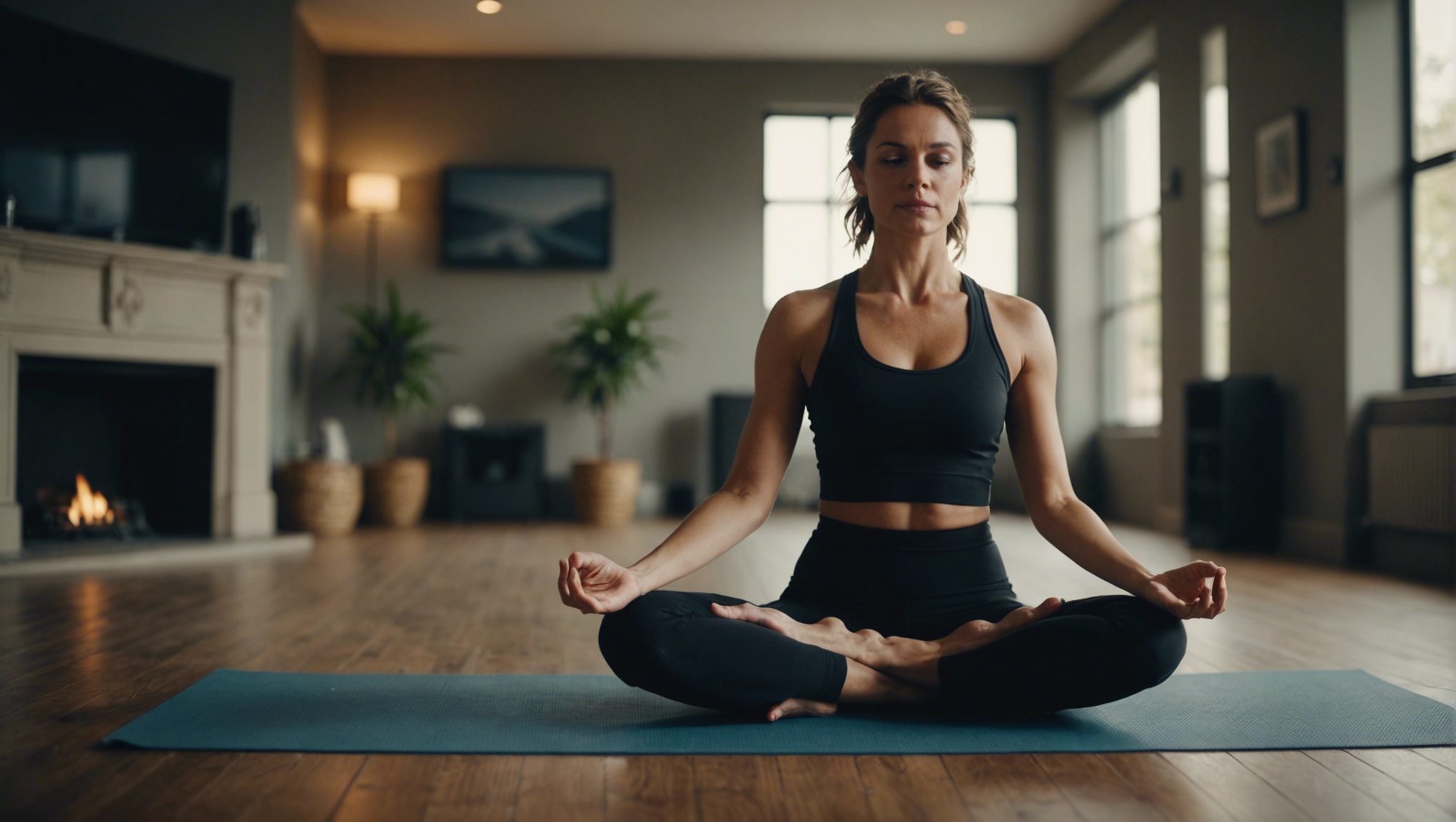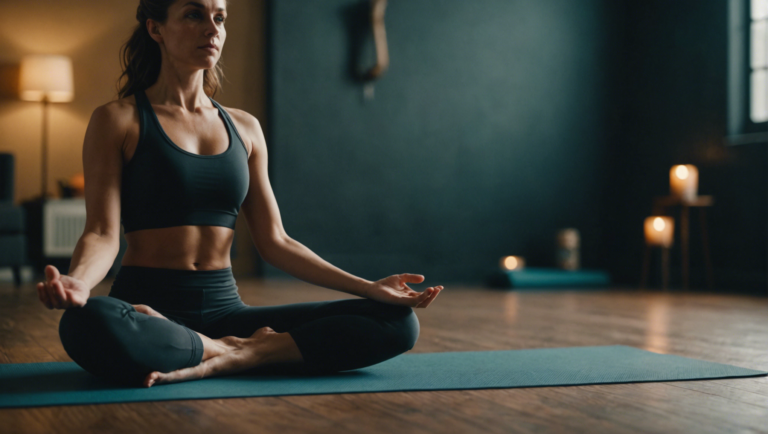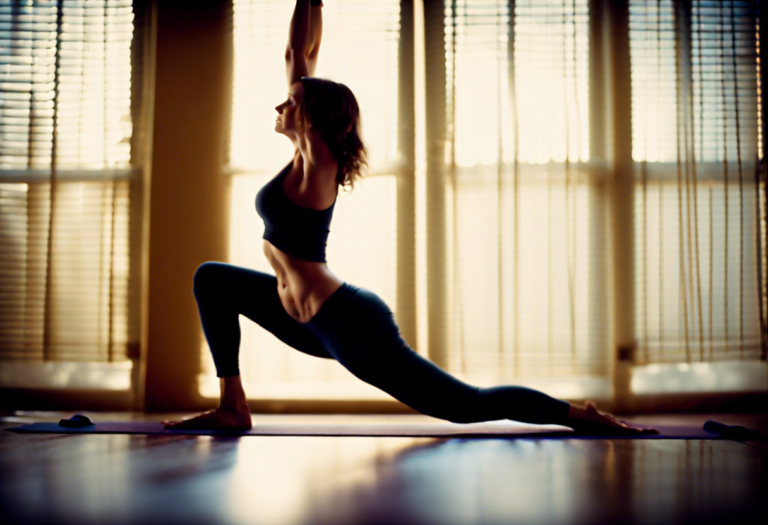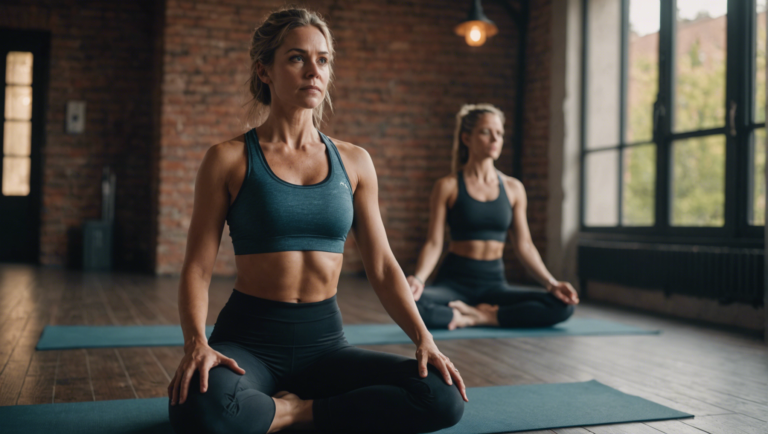Is It Beneficial To Practice The Same Yoga Routine Everyday?
The Impact of a Daily Yoga Routine on Physical and Mental Health
Yoga, an ancient practice with roots stretching back thousands of years, has seen a surge in popularity in the modern wellness landscape. Its holistic approach to combining physical postures, breathing exercises, and meditation provides a unique blend of benefits for both body and mind. As more people turn to yoga for its health benefits, questions arise about the impact of engaging in a yoga routine daily. Delving into this topic reveals insights into how a consistent yoga practice can serve as a cornerstone for a healthy lifestyle.
The Physical Benefits of Daily Yoga Practice
Enhancing Flexibility, Strength, and Balance
One of the most noticeable effects of a regular yoga practice is the improvement in flexibility. The gentle stretching of yoga poses helps to loosen tight muscles, increasing the range of motion and reducing the risk of injury. However, the benefits extend beyond flexibility. Many yoga poses require supporting the weight of the body in novel ways, including balancing on one leg or supporting oneself with the arms. Over time, this builds strength in major muscle groups as well as the smaller, stabilizing muscles not often targeted in traditional gym workouts.
Additionally, yoga promotes balance, both literally and figuratively. Physically, mastering poses that require balance can enhance coordination and prevent falls, which is particularly important as one ages. Mentally, the balance achieved through yoga can help one maintain a steadier mood and outlook on life.
Bolstering Cardiovascular and Respiratory Health
Yoga is well-known for its calming effects, but its impact on cardiovascular and respiratory health is equally significant. Practices such as pranayama (yogic breathing exercises) improve lung function and increase the efficiency of oxygen use by the body. This enhanced breath control can lead to lower blood pressure and improved endurance.
Moreover, the gentle but continuous movement involved in flowing yoga sequences (like those found in Vinyasa or Ashtanga yoga) can be a cardiovascular workout, helping to improve heart health and stamina. Regular yoga practice can lead to a slower heart rate, reduced blood pressure, and a decrease in inflammation, all of which contribute to a reduced risk of heart disease.
The Mental Health Advantages of a Regular Yoga Routine
Alleviating Stress and Anxiety
Yoga’s mental health benefits are as profound as its physical advantages. The practice is particularly effective at reducing stress and anxiety, thanks to its meditative elements and focus on present-moment awareness. This mindfulness can shift the balance from the sympathetic nervous system (or the fight-or-flight response) to the parasympathetic nervous system, which helps the body rest and digest. Over time, this can lead to lower cortisol levels, decreased stress, and an overall sense of well-being.
Enhancing Mood and Cognitive Function
Engaging in daily yoga has been shown to improve mood and cognitive function, thanks in part to the release of endorphins during exercise. The concentration required to perform various poses also encourages a calm, focused mindset, which can carry over into daily life, improving memory and attention span.
Moreover, the discipline of a daily practice can boost self-esteem and body image by fostering a sense of achievement and a deeper connection with one’s body. As practitioners become more attuned to their physical condition, they often adopt healthier eating habits and lifestyle choices, bolstering overall well-being.
: Is a Daily Yoga Routine Beneficial?
Reflecting on the diverse benefits yoga offers, it’s clear that incorporating a yoga practice into one’s daily routine can profoundly impact physical and mental health. Whether seeking to improve flexibility, reduce stress, or enhance cardiovascular health, yoga provides a versatile, accessible means of achieving these goals. However, as with any fitness regimen, it’s crucial to listen to one’s body and modify practices as needed to fit individual needs and limitations.
In essence, a daily yoga routine emerges not only as beneficial but as a holistic approach to wellness, harmonizing the body and mind, and fostering a sense of inner peace and strength.
Comparing Flexible vs. Fixed Yoga Routines: Pros and Cons
Yoga, an ancient practice rooted in over 5,000 years of history, continues to be a source of physical, mental, and spiritual nourishment for millions around the globe. As it has evolved, so have the approaches to incorporating it into daily life, leading to a debate between adopting a flexible vs. a fixed yoga routine. Each approach offers unique benefits and challenges, catering to diverse needs, preferences, and lifestyles. Here, we explore these differences in depth, offering insights into which might best serve your personal yoga journey.
Flexible Yoga Routines: Adaptability Meets Individual Needs
Flexible yoga routines are characterized by their variability. Practitioners who favor this approach tend to alter their practice based on daily needs, energy levels, and time constraints. This adaptability is one of its most significant advantages, enabling individuals to stay attuned to their bodies and modify their practice accordingly.
Pros of a Flexible Routine:
- Customization to Personal Needs: The ability to tailor a yoga session to address specific physical discomforts or mental stressors on any given day is a considerable advantage. It allows for targeted practices that can more directly benefit the practitioner’s immediate needs.
- Prevents Boredom: By varying poses and sequences, practitioners can keep their practice fresh and engaging, which is essential for maintaining long-term motivation.
- Encourages a Deeper Connection: This approach fosters a more intimate understanding of one’s own body and mind, as it requires constant self-assessment and adaptation.
Cons:
- Lack of Structure Can Hinder Progress: Without a planned routine, it can be challenging to track progress or consistently work towards specific yoga goals, such as mastering a particular pose or enhancing flexibility.
- Potential for Neglecting Key Aspects: There’s a risk of favoring certain practices over others, leading to imbalances. For instance, one might consistently avoid more challenging poses or necessary components like pranayama (breath work).
Fixed Yoga Routines: Consistency Fuels Progress
In contrast, a fixed yoga routine involves repeating the same series of poses in the same order for a set period. This approach is highly structured, offering a clear roadmap for progress and mastery.
Pros of a Fixed Routine:
- Consistency Builds Discipline: The regularity of a fixed sequence can cultivate discipline and commitment, as the practice becomes a non-negotiable part of daily life.
- Easier to Track Progress: With repetition comes the ability to notice subtle improvements over time, whether in flexibility, strength, or the precision of poses.
- Strengthens Memory and Focus: Repeating a sequence helps commit it to memory, allowing for a more meditative practice that is less about recalling what comes next and more about deepening the experience.
Cons:
- Risk of Monotony: Doing the same sequence daily can become repetitive and boring for some, potentially diminishing enthusiasm for practice.
- Potential for Overuse Injuries: Repeatedly performing the same poses without variation can lead to strain and stress on specific muscle groups, increasing the risk of injuries.
In choosing between a flexible and a fixed routine, it’s essential to consider personal goals, lifestyle, and preferences. A flexible routine may better suit those who thrive on variety and are looking to yoga primarily for stress relief and general well-being. Conversely, a fixed routine could be more beneficial for individuals aiming to deepen their practice, achieve specific poses, or enjoy the discipline and clarity that come from a consistent sequence.
Ultimately, the best approach is one that feels personally enriching, sustainable, and responsive to your body’s needs. It may even be beneficial to blend elements of both, allowing for the structure and accountability of a fixed routine while incorporating the adaptability and personalization of a flexible practice. Listening to your body and being open to adjustments will guide you toward a fulfilling and balanced yoga experience.
How Consistency in Yoga Practice Enhances Muscle Memory and Posture
The Role of Regular Yoga in Enhancing Muscle Memory
Yoga, an ancient practice rooted in Indian philosophy, has transcended its traditional boundaries to become a global phenomenon, renowned for its numerous health benefits. A fascinating aspect of consistent yoga practice is its profound impact on muscle memory and posture. This repetitive practice not only hones the physical body but also sharpens the mind-body connection, leading to unparalleled benefits.
Building a Solid Foundation with Muscle Memory
Muscle memory, a form of procedural memory, involves performing a task until it becomes almost automatic. This phenomenon is particularly beneficial in yoga, where precision and consistency in positing are paramount. Regular practice of specific yoga sequences aids in ingraining these movements in our muscle memory, making it easier to achieve and hold poses with lesser conscious effort over time. This not only accelerates the progress in one’s yoga journey but also significantly reduces the risk of injury.
The Impact of Consistency on Posture
Poor posture, a common ailment in the digital age, often results from bad habits such as slouching at a desk or overusing mobile devices. Yoga counters these modern-day challenges by promoting an awareness of body alignment and strengthening the core muscles essential for good posture. Through consistent practice, the body gradually adopts these correct alignment principles, leading to noticeable improvements in overall posture. This shift not only impacts physical appearance but also enhances respiratory function and reduces physical discomfort.
Enhancing the Mind-Body Connection
Yoga is more than a physical practice; it’s a mental discipline that fosters a deep connection between the body and the mind. This bond is strengthened through consistent practice, with muscle memory playing a pivotal role. As the body remembers and perfects poses, the mind is freed from the burden of concentrating on the basics, allowing for a deeper meditation and introspection. Consequently, practitioners often report a heightened sense of mental clarity and peace accompanying their physical improvements.
The Power of Routine in Yoga Practice
Adopting a consistent yoga routine is instrumental in achieving these benefits. While the variety in practice can keep things interesting, the real magic lies in consistency. A set routine, practiced regularly, not only enhances muscle memory and posture but also contributes to a disciplined and focused life. It serves as a reminder that progress in yoga, as in any other discipline, comes not from sporadic bursts of enthusiasm but from the quiet dedication of regular practice.
Beyond the Mat: Life Applications
The lessons of consistency, discipline, and progress in yoga extend far beyond the mat into daily life. The improved muscle memory and posture can lead to a more confident and authoritative presence in professional settings. Moreover, the discipline and focus developed through regular practice can enhance productivity and creativity, proving that the benefits of a consistent yoga routine resonate in all facets of life.
Regular yoga practice is much more than a physical workout; it’s a holistic approach to wellbeing. By fostering muscle memory and improving posture, consistent yoga practice offers profound benefits that echo through the mental, physical, and spiritual aspects of life. The commitment to a regular routine, while seemingly simple, is a powerful tool for personal transformation, underlining the adage that true progress is the cumulation of consistent efforts over time.
This understanding invites practitioners of all levels to view their yoga journey not just as a series of physical exercises but as a path to profound personal growth. In the world of yoga, consistency is not just a practice; it’s a testament to the transformative power of mindful repetition.
The Psychological Benefits of Sticking to a Single Yoga Sequence
Yoga, an ancient practice rooted in over 5,000 years of Indian philosophy, has evolved into a comprehensive lifestyle choice for millions worldwide. Its adaptability and inclusivity allow practitioners of all levels to find a sequence or style that resonates with them personally. Among the myriad of approaches to yoga, the decision to adhere to a single yoga sequence over time might seem contradictory to the variety-seeking nature of contemporary fitness trends. However, this practice embodies a profound psychological depth, offering unique benefits that unfold with disciplined repetition.
The Comfort of Routine
Unveiling the Layers of Repetition
One of the intrinsic qualities of performing the same yoga sequence daily is the development of a comfortable routine. This familiarity breeds a soothing predictability that can significantly reduce stress and anxiety levels. The human brain appreciates predictability, and by engaging in a consistent practice, one creates a stable foundation upon which mental well-being can flourish.
Repeatedly navigating the same sequence allows for a deeper connection to the nuances of each posture and breath. This mindful repetition fosters an intimate acquaintance with one’s physical and mental states, unveiling subtle shifts and progress over time. It’s in this nuanced exploration that practitioners often discover the most profound transformations, both on and off the mat.
Cultivating Mindfulness and Concentration
Deepening Focus Through Familiarity
The repetitive nature of a unchanged yoga sequence cultivates an enhanced state of mindfulness and concentration. With the elimination of the need to recall or anticipate the next pose, practitioners can fully immerse themselves in the present moment. This heightened awareness of the body and breath in the here and now is a cornerstone of mindfulness, which has been widely documented for its benefits in reducing symptoms of depression and anxiety.
Moreover, the consistent practice of a familiar sequence can significantly improve concentration. As the mind becomes less distracted by external stimuli or internal dialogues, it can reach a state of deep focus, often referred to as "flow." This mental state, characterized by complete absorption in the current activity, can extend its benefits into daily life, enhancing productivity and cognitive function.
Enhancing Self-discipline and Personal Achievement
The Role of Discipline in Personal Growth
Committing to the same yoga sequence every day demands a high level of self-discipline, a quality that is directly transferable to personal and professional life. This commitment to a daily practice, even on days when motivation may wane, strengthens willpower and fosters a sense of personal achievement. Over time, this disciplined approach can lead to significant improvements in physical health, mental clarity, and emotional resilience.
The journey through a consistent yoga practice also serves as a mirror to one’s personal growth. As practitioners deepen their commitment, they often notice a parallel enhancement in their ability to face challenges, manage stress, and make decisions with clarity and confidence.
Bridging the Internal with the External
Reflecting Inner Change Through Outer Practice
The external practice of yoga as a physical discipline is deeply intertwined with its internal, psychological benefits. By adhering to a single sequence, practitioners engage in a symbiotic process where external actions reflect and reinforce internal change. This alignment of body, mind, and spirit through repetitive practice can lead to profound personal transformations, offering insights into one’s behavior, thought patterns, and emotional responses.
Moreover, this consistent practice can act as a stable anchor, providing a sense of grounding in times of change or uncertainty. In the meditative repetition of a beloved sequence, practitioners find not only physical flexibility and strength but also mental agility and emotional stability.
The decision to practice the same yoga sequence every day is far from monotonous. Instead, it is a rich, layered journey into the self, offering myriad psychological benefits that ripple through all facets of life. This deep, introspective approach to yoga fosters a unique blend of mindfulness, concentration, discipline, and personal growth, making it a profoundly transformative practice for those who choose to embark on this path.
Personalizing Your Yoga Routine: Tips for Keeping It Fresh and Effective
Yoga, an ancient practice with modern relevance, offers a plethora of benefits for both mind and body. However, even the most dedicated practitioners can find their routine becoming stale or less effective over time. Personalizing your yoga practice is key to keeping it fresh, engaging, and beneficial to your personal growth and well-being. The aim is not to overhaul the wisdom of centuries but to tailor this time-honored tradition to better fit individual needs, preferences, and goals. Here are expert strategies for rejuvenating your yoga journey.
Embrace Variety in Your Practices
While there’s comfort in routine, the body and mind thrive on variation. Integrating different styles of yoga into your regimen challenges your body in new ways, promoting strength, flexibility, and balance. If your practice has predominantly focused on Vinyasa flows, consider exploring Yin for deep tissue and fascia release. Similarly, practitioners used to slow-paced classes might find invigorating benefits in Ashtanga or Power Yoga. This variety not only prevents physical plateaus but also keeps your practice mentally stimulating.
Listen to Your Body’s Needs
One of the most profound lessons yoga teaches is mindfulness – the act of being present and tuned into your body’s cues and needs. Personalize your practice by adjusting it according to how you feel on any given day. On days filled with energy, a dynamic sequence might be most beneficial. Alternatively, when feeling drained or stressed, a restorative session focusing on relaxation and stretching could be exactly what your body needs. This approach ensures your yoga practice is always beneficial, supporting your well-being in the most appropriate way.
Set Intentional Goals
Goals in yoga can extend beyond achieving specific postures. They can encompass improving mental clarity, reducing stress, enhancing flexibility, or building physical strength. Setting clear, intentional goals helps tailor your practice to your aspirations, making each session more meaningful and directed. Whether it’s dedicating a month to mastering a challenging pose or using your practice as a tool for meditation and stress relief, focused intentions guide your journey, making each session a step towards achieving your personal vision of wellness.
Integrate Yoga with Other Fitness Routines
Yoga is incredibly synergistic with other forms of exercise. For those looking to build strength, combining yoga with weight training can be highly beneficial, as yoga can enhance flexibility, balance, and recovery, aspects often neglected in traditional strength training. Similarly, endurance athletes, such as runners or cyclists, can use yoga as a tool to prevent injuries and improve their performance by incorporating poses that target overused muscles. This holistic approach maximizes the benefits of your physical activities, creating a well-rounded and sustainable fitness regimen.
Continuously Explore and Learn
The journey of yoga is infinite, with its depths and complexities offering lifelong learning opportunities. Engage with the vast world of yoga by attending workshops, retreats, and different classes, or by reading books and watching online tutorials. Learning from various teachers and traditions can introduce new perspectives and techniques, refreshing your practice and deepening your understanding. This continuous exploration keeps your practice dynamic, ensuring it grows and evolves with you.
Tailoring Your Practice to Your Life
Above all, your yoga practice should suit the rhythms of your life. This means adjusting the length, style, and intensity of your practice to fit your schedule, energy levels, and commitments. Sometimes, a ten-minute morning session may be all you can manage, and that’s perfectly fine. What matters is consistency and the intention behind your practice. By making yoga a flexible and responsive part of your daily life, it becomes not just an activity but a sustaining and enriching personal journey.
By personalizing your yoga routine with these strategies, you turn each practice into a self-discovery and growth opportunity. Remember, the goal of yoga is not perfection but progress – a journey that is uniquely yours, filled with lessons, achievements, and, most importantly, a deeper connection to yourself.
Conclusion
Embracing a daily yoga routine emerges as a deeply personal journey that offers remarkable benefits and challenges. As we have explored, the impact of such a regimen on both physical and mental health cannot be understated. It’s a practice that transcends mere physical exercise, weaving into the very fabric of our mental wellbeing, offering a sanctuary of peace in the relentless pace of modern life. The decision between adopting a flexible versus a fixed yoga routine is laden with considerations, each with its own set of advantages and disadvantages. While a fixed routine cultivates discipline and deepens the connection to one’s practice, embracing flexibility can stave off monotony and cater to the body’s varying needs over time.
Diving deeper into the science and art of yoga, we uncover how consistency in practice is not just about discipline—it’s about communication between the body and mind. The cultivation of muscle memory and the incremental improvement in posture is a testament to the body’s remarkable ability to learn and adapt. This consistency lays the foundation for progress, not just on the mat but in our daily lives, reflecting in the way we carry ourselves and face challenges. Moreover, the psychological terrain navigated through sticking to a single yoga sequence reveals a landscape rich with benefits. It offers a unique mirror, reflecting our mental state and progress over time, and provides a mental anchor in the sea of daily stressors, enhancing mindfulness and reducing anxiety.
However, the journey of yoga is inherently personal, and the evolution of one’s practice is a testament to this. Personalizing your yoga routine, intertwining the threads of consistency and novelty, is a delicate balance to strike. It demands an intimate understanding of one’s body and mind, a readiness to listen deeply to the cues they provide, and the courage to adapt accordingly. This journey of personalization is not without its challenges, yet it is precisely in navigating these that growth ensues. Tips for keeping the practice fresh and effective foster not just a sustainable routine but one that is vibrant, engaging, and deeply nourishing.
As we tread the path of yoga, it becomes evident that it is much more than a series of postures to be perfected. It is a dialogue, a dance of give and take with our deepest selves. Whether one chooses to walk the path of a fixed sequence or weave in the spontaneity of varied routines, the essence lies in the commitment to show up on the mat, day after day. In this commitment lies transformation, not just in the realm of physical flexibility or strength but in the profound realms of mental clarity, emotional resilience, and spiritual growth.
The synthesis of these insights reveals a multifaceted perspective on the practice of yoga, one that honors its complexity and depth. It underscores the importance of approaching one’s practice with mindfulness, respect, and an openness to adapt and evolve. It is not merely about achieving the perfect pose but about embarking on a journey of self-discovery, healing, and profound transformation. As we continue to explore and refine our practice, let us do so with a sense of curiosity, compassion, and reverence for the ancient wisdom of yoga, allowing it to guide us not just on the mat but in the intricate dance of life.



